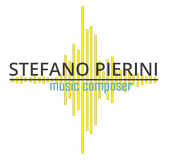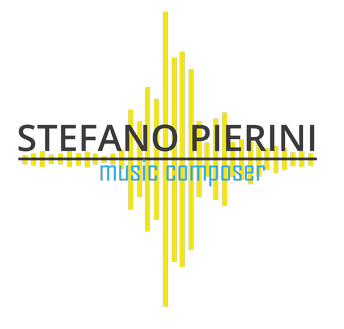
SKETCHBOOK for ensemble
SKETCHBOOK is, paradoxically, a vocal composition, a madrigal without voice, whose text is implicit and only visible in the score; the connection between music and words, here in its extreme abstraction, is what generates the compositional process: is the attempt to put in music not the word in its completeness but only its reflection, in the same way of a inner reading, without its vocal emergence. The inspiration of the composition is drown from Edward Easting Cumming’s ‘In Just-‘, written in 1916, that describes a children’s game scene set in a muddy street of a unspecified city during the spring; to the event takes part an old weird and disturbing man who brings some balloons and gathers those kids around him blowing violently in a whistle. The meaning of the poem is something ambiguous: the narrator seems to be a child who expresses himself by means of a creative and free use of the language and who describes what he sees in a direct, fragmented and visionary way; what is going to be experienced is a very dynamic moment, with huge energies, coordinated by this dreadful character but, at the same time, of the utmost attraction. The old man bears on himself the features that reveals his real identity: the ‘goated’ feet and the limp are indicators of a double nature connected both to the Greek mythology (the cult of Pan) and the Christian tradition (the devil), he is the director of the play to which he gives the start signal and after which everything is going to be different. The spring is the time of the (re)birth of the world that comes before the summer, when the world becomes ripe, and the balloon man is the one who marks this passage, from one age to the other; all happens through ambiguity and ambivalence: the instinctual drive releases its energetic power and fertility that blows in a lively eruption but that implies the ‘virginity’ loss. It is the description of a atavic ritual, here brought in the ‘contemporary’ but that repeats itself since the mists of times in its power and violence. Concerning the conception of the work, the composition is segmented in five moments the first of which is resumed at the end as the conclusion of the form arch but that is, simultaneously, an opening towards a new ‘spring’, in a endless and unresolved cycle (or, in some way, always solved); to each of them is linked a textual element, extracted from the original context and examined in its peculiarity:
Moment 1 – ‘…far and wee…’
Moment 2 – ‘…and it’s spring…’
Moment 3 – ‘…the lame balloonman…’ and ‘…whistles…’
Moment 4 – ‘…when the world is puddle-wonderful…’ and ‘…the queer goat-footed…’
Moment 5 – ‘…far and wee…’ (not written in the score)
This creates a synthetic perspective, a partial and parallel interpretation that recomposes the text by means of its dismembered fragments ‘charged’ musically, which goes to join the other possible readings (mental, vocal, theatrical, etc…) as a wedge of its vast semantic mosaic, towards the final Reading. The harmonic-melodic matter of the piece is provided by one ‘all-intervals chord’ that includes all the chromatic pitches: played horizontally it gives a matrix/scale from which, through the coupled exchange of some intervals, I derived five variants; only two of them (the matrix and the fourth variant) are complete while the others repeated some pitches. This system produces an elliptical melos, hypothetically endless, that runs through the whole composition and the internal relations of which are controlled by the symmetry of the augmented fourth interval. The physiognomy of this matter takes different forms in each section: in Moment 1 it is direct emanation of the source pitch E 4 (that represents the tonal horizon of the piece), in Moment 2 is the axis on which are grafted the harmonic blocks deduced from the matrix too, in Moment 3 is broken and superimposed to itself, in Moment 4 is projected in the high and low registers while in Moment 5 is a quotation of itself. The rhythm is based on a polyrhythmic structure made up of different layers, each flowing at different speeds and controlled by a specific coefficient; every section has a different degree of polyrhythmic density that grows with the evolution of the composition, reaching the atomization at the end of Moment 4. SKETCHBOOK was composed during the composition workshop EARLab 2006 hold by Luca Francesconi in Stresa, performed during the Settimane Musicali di Stresa 2006 by BIT20 Ensemble conducted by Daniele Rustioni and broadcasted during the program Radio3 Suite of the RadioRai3 channel.
IN JUST-
in Just-
spring when the world is mud-
luscious the little
lame balloonman
whistles far and wee
and eddieandbill come
running from marbles and
piracies and it’s
spring
when the world is puddle-wonderful
the queer
old balloonman whistles
far and wee
and bettyandisbel come dancing
from hop-scotch and jump-rope and
it’s
spring
and
the
goat-footed
balloonMan whistles
far
and
wee
da “Tulips and chimneys”(1923)



